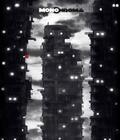Narratively led with no cut-scenes, text or spoken words, Monochroma offers a deep visual, intellectual and emotional attachment, as the brothers work together to progress past devilishly clever puzzles to save their world from tyranny.
Inspired by the developers’ childhood memories of moving from the countryside to urban Istanbul and the “Gezi Protests” of 2013, the most violently oppressed protest in modern Turkey, players discover the environment and follow the story through a carefully constructed black-and-white palette with splashes of red. As a result, the story is instantly understandable by players of all nationalities – without any localization required.
Spread over four chapters, discover vast ghettos built upon thousands of sheds reaching into the clouds, a labyrinth of sewer tunnels, factories bellowing out industrial smoke and a city sized zeppelin hovering in the sky. The puzzles encountered in Monochroma are realistic and use physics to naturally blend in with the environment.
The brothers must now survive six hours of devilishly clever puzzles in order to save their world from tyranny.
Another Monochroma trademark is the relationship between the two brothers. Early in the game, the younger brother injures his leg after an accident, and must be supported by his older sibling. At times, the player needs to temporarily stop carrying him in order to solve puzzles. However he can only be placed near safe, bright areas—because like most kids, he’s scared of the dark. This gameplay mechanic defines Monochroma as a cerebral, methodical puzzle game that rewards players who are caring and brave at the same time. Being a responsible older sibling is mandatory—just as in real life.
More articles about Monochroma











 Set in an alternate universe during the 1950s, Monochroma tells the story of a boy and his brother who witness a horrific crime committed by an evil corporation.
Set in an alternate universe during the 1950s, Monochroma tells the story of a boy and his brother who witness a horrific crime committed by an evil corporation.














